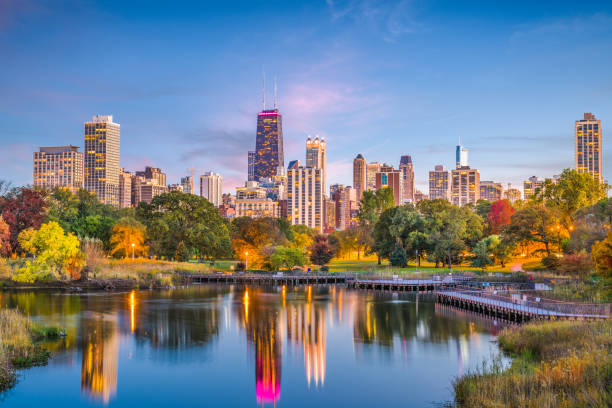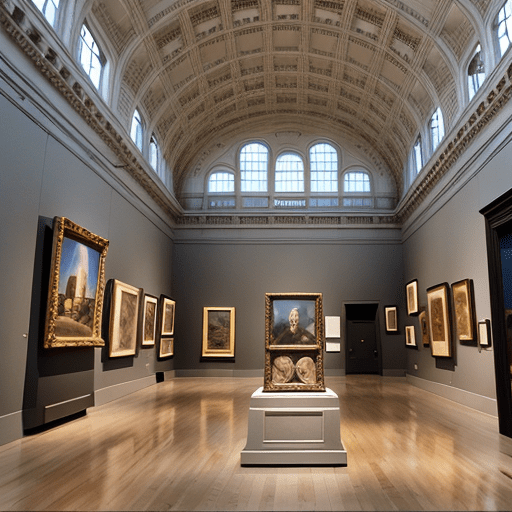Exploring Chicago’s Hidden Historical Gems: A Walking Tour
Chicago, a city rich in culture and history, offers more than just towering skyscrapers and deep-dish pizza. Beneath its modern facade lies a treasure trove of hidden historical gems waiting to be explored. Join us on a walking tour that uncovers the lesser-known stories and sites that make the Windy City truly unique.
Table of Contents
1. Introduction to Chicago’s Hidden History
2. Start Your Tour at the Historic Water Tower 🏰
3. Discover the Old Chicago Post Office 📬
4. Visit the Glessner House Museum 🏠
5. Explore the Pullman District 🚂
6. Wander Through Graceland Cemetery 🚶♂️
7. Conclusion: Embrace the Past
8. FAQs
Introduction to Chicago’s Hidden History
Chicago’s history is woven with tales of innovation, resilience, and transformation. While the Great Chicago Fire of 1871 and the World’s Columbian Exposition of 1893 are well-documented chapters, many fascinating stories remain tucked away in the quieter corners of the city. This walking tour will guide you through these lesser-known sites, offering a glimpse into the past that shaped Chicago’s present.
Start Your Tour at the Historic Water Tower 🏰
Begin your exploration at the Historic Water Tower, one of the few structures to survive the Great Chicago Fire. Located on Michigan Avenue, this Gothic Revival building stands as a testament to the city’s resilience. As you admire its architecture, imagine the flames that once threatened its existence and the determination of the people who rebuilt the city around it.
Discover the Old Chicago Post Office 📬
Next, head to the Old Chicago Post Office, a massive structure that spans the Eisenhower Expressway. This Art Deco marvel, once the largest post office in the world, has been transformed into a vibrant hub for businesses and events. Wander through its halls and envision the bustling activity of a bygone era, when the postal service was the lifeline of communication across the nation.
Visit the Glessner House Museum 🏠
Continue your journey to the Glessner House Museum, a National Historic Landmark nestled in the Prairie Avenue Historic District. Designed by architect Henry Hobson Richardson in 1887, this Romanesque-style mansion offers a peek into the opulent lifestyle of the Chicago elite during the late 19th century. The meticulously preserved interiors and guided tours provide an intimate look at the lives of the Glessner family and their contemporaries.
Explore the Pullman District 🚂
No historical tour of Chicago is complete without a visit to the Pullman District. This planned industrial community, founded by George Pullman in the 1880s, was the birthplace of the Pullman Company, famous for its luxury railroad cars. Stroll through the charming streets and visit the Pullman National Monument to learn about the labor strikes and social movements that were pivotal in shaping labor laws in the United States.
Wander Through Graceland Cemetery 🚶♂️
Conclude your walking tour with a peaceful stroll through Graceland Cemetery, an oasis of art and history. This serene resting place is home to the graves of many notable figures, including architect Daniel Burnham and retailer Marshall Field. As you meander through the winding paths, take in the stunning sculptures and mausoleums that tell stories of Chicago’s influential past residents.
Conclusion: Embrace the Past
Chicago’s hidden historical gems offer a captivating journey through time, revealing the city’s dynamic evolution and the people who played a role in its story. Whether you’re a local or a visitor, these sites invite you to step off the beaten path and immerse yourself in the rich tapestry of Chicago’s past. So lace up your walking shoes and embark on an adventure that promises to enlighten and inspire!
FAQs
1. How long does the walking tour take?
The tour can take anywhere from 3 to 5 hours, depending on your pace and the time spent at each site.
2. Are the sites accessible to everyone?
Most of the sites are accessible, but it’s always a good idea to check in advance, especially if you have specific accessibility needs.
3. Can I take photographs during the tour?
Photography is generally allowed, but some locations may have restrictions. It’s best to ask permission at each site.
4. Is there an ideal time of year to take this tour?
Spring and fall offer pleasant weather, making it ideal for walking tours. However, each season brings its own charm to the city’s landscape.
5. Are guided tours available at these historical sites?
Yes, many of these sites offer guided tours that provide deeper insights into their history and significance.

